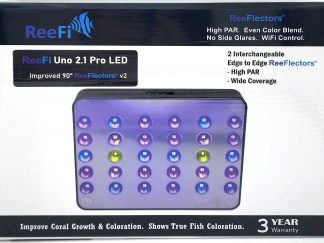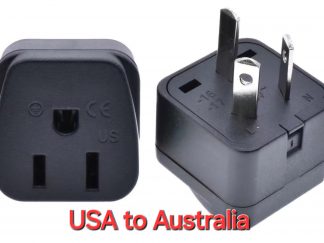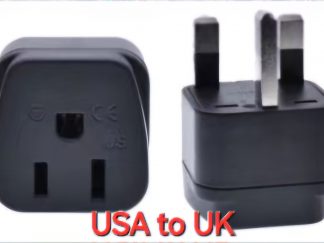There is a general believe that light from LED diodes are narrow beam and require wide angle lenses to give it wider spread. Today we’ll explore the hidden truth of LED lighting and lenses.
This is a typical LED flashlight with optical lens that you can zoom. Picture on the right is the exact LED flashlight but I removed the LED lens.

LED flashlight with Optical Lens 
LED flashlight without Optical Lens
Holding the flashlight about 8″ from the door. As you can see from the below 3 pictures:
- Optical Lens Zoomed In all the way: You get super bright narrow focused light.
- Optical Lens Zoomed Out all the way: You get wider spread typical of wide lens.
- No Optical Lens: LED by itself has 180-120deg spread.

Optical Lens Zoomed In 
Optical Lens Zoomed Out 
No Optical Lens
Optical lens are great to focus the light to area of interest and provide brighter illumination in that localized area. However, this is not ideal in reef aquarium settings because now you get disco ball effect with different color LEDs with it’s own focused lens. The advantages of optical lenses are purely for the LED light manufacturers. Using LED lenses provide brighter illumination at deeper water penetration so less LED diodes can be used. Below are some advantages for optical lenses:
- Less LED diodes needed to give same PAR at the bottom of the tank to lower production cost.
- Less LED diodes means less heat generated, thus cheaper and less efficient heatsink and fan can be used to even lower production cost.
- Less LED diodes removes the complication of metal core PCB wire routing and heat transfer, which lower the production cost even more.
Unfortunately, all these cost savings from using optical lenses do not get pass down to the consumers, but the consumers get all the disadvantages/issues:
- Focused light from each LED diodes is like a bunch of flashlight which causes the well known Disco Ball effect. This is especially aggravated with water surface movements.
- Create intense light to shadow contrast which is why a lot of people either switch to T5 or supplement with T5.
- Added cost of add-on diffuser to fix the problem but sacrifice PAR performance.
- Even with the most focused lens, if you can see the convex part of the lens, stray light will hit your eye, so shades needed to be added.
This picture illustrate stray light hitting the camera causing flares to show up in the picture. This was taken with flashlight zoomed maxed to pin point focus pointing straight up and camera is taken next to it.

ReeFi’s solution is to eliminate optical lens all together and add the following:
- ReeFlector™: individual reflectors to provide uniform blended light without disco ball effect.
- Custom metal core PCB with direct thermal paths technology allows for more LED diodes without sacrifice PAR performance.
- Custom design heatsink with maximum heat transfer surface area using zipper fins technology.
- Custom high pressure blower fan instead of cheaper lower pressure axial fan.

ReeFlector™ for Uniform Blended Light 
Custom Metal Core PCB with Direct Thermal Path allows for more LED Diodes 
Custom Heatsink and High Pressure Fan



